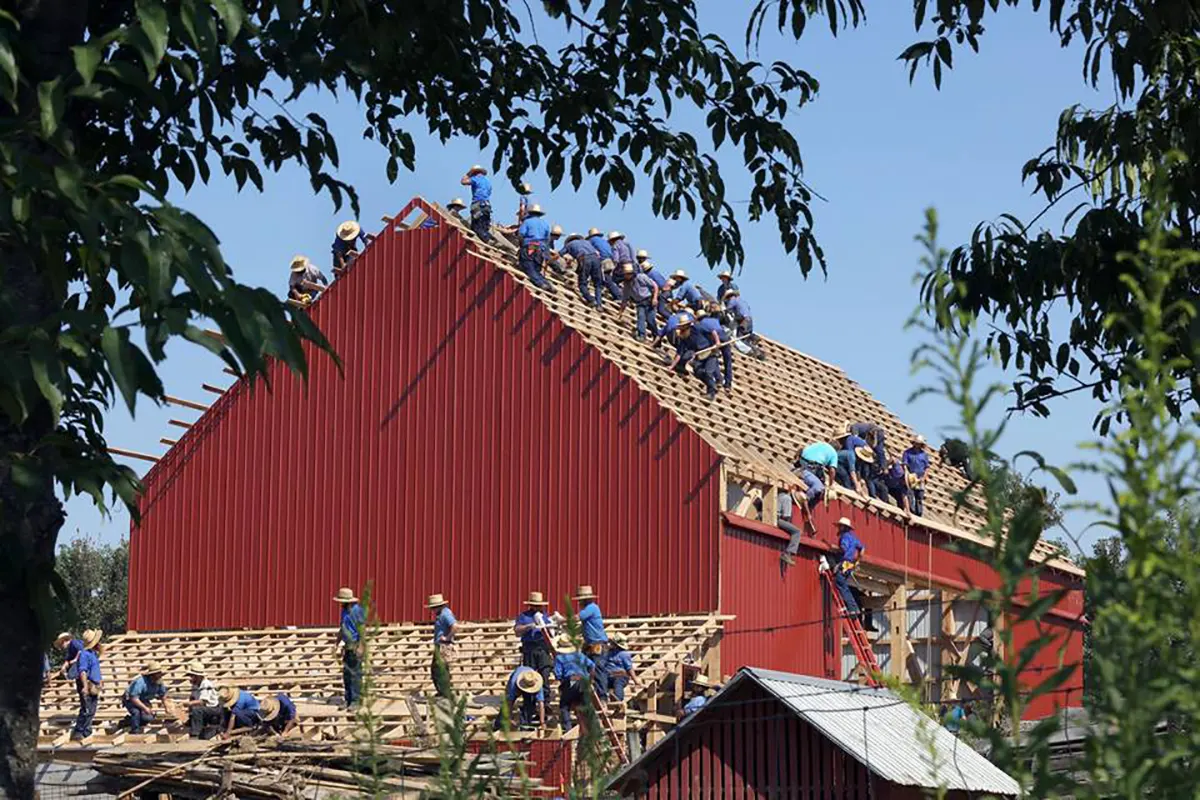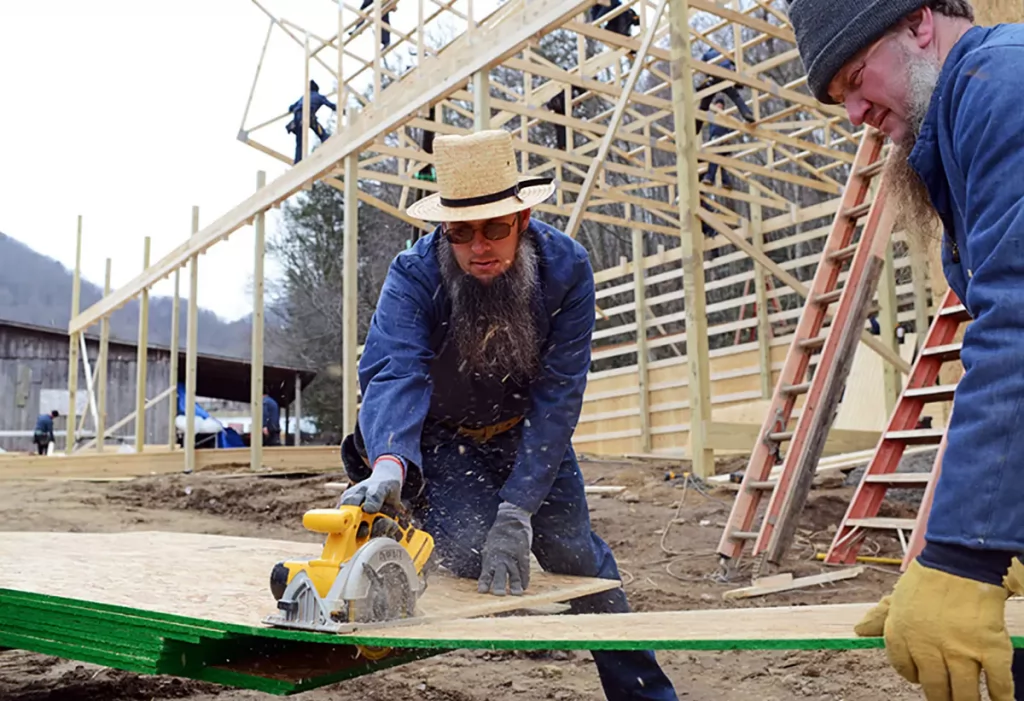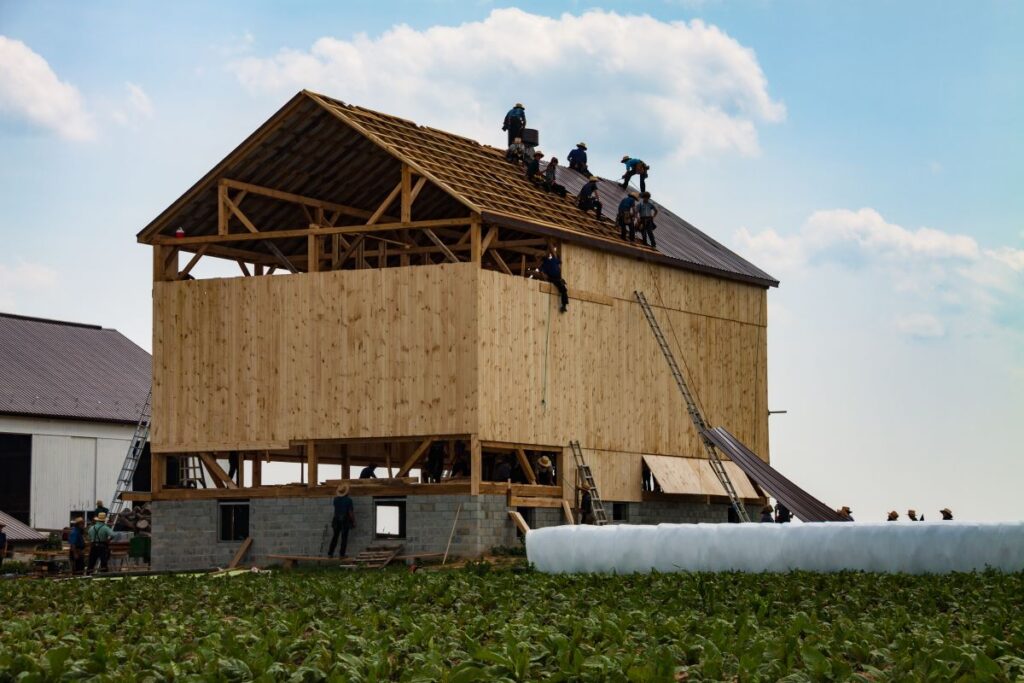
Amish men and women are all known to be among the most hardworking and helpful people in their community in the world. These exceptional Amish values are often seen in their joint cooperative work projects, such as the well-known Amish Barn Raising.
An Amish barn raising is a significant Amish community event where all Amish able-bodied men cooperate to build a new barn or other structures like houses, farms, or schools.
Below is a closer look at this Amish tradition.
More About The Amish Barn Raising
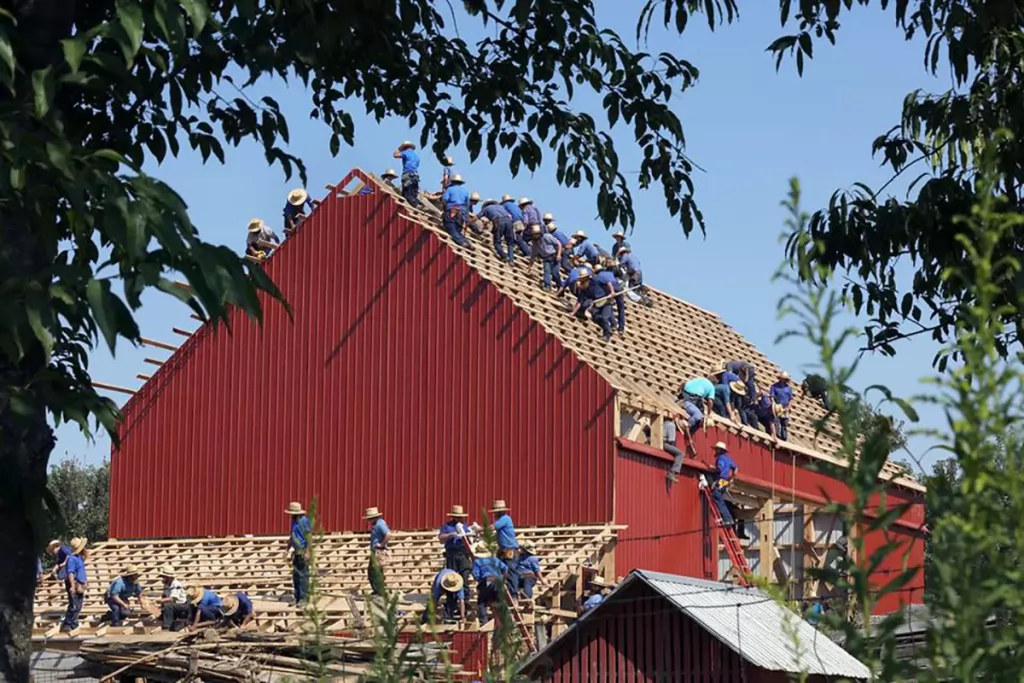
Since the early age of the Amish religious group hundreds of years ago, their church leaders have taught each one of them the practice of “mutual aid.”
In this system, the Amish people work hand in hand to accomplish a task that would benefit everyone in their community. They also believe that they are responsible for the welfare of their fellow Amish church members.
In a traditional Amish Barn Raising, community members provide free manual labor to one of their fellow members should they wish to build a barn or any structure, with an understanding that the favor will be returned someday.
The most practical goal of this tradition is to strengthen the bond and camaraderie among the Amish people within the community. Everyone is encouraged to help since barn raisings are their chance to socialize and maintain a good relationship with each one of the volunteers. Sometimes, they get to meet their schoolmates during the event and build new friendships.
It is important to note that barns are significant to all Amish communities because they hold their church services and other community events in members’ barns. They have no literal churches like other religious groups. Therefore, the Amish people treat each barn like most people who are non-Amish treat their churches, temples, and other religious structures.
Why Is It Called A Barn Raising?
Historically, “barn raising” describes a collaborative action of many people from a neighborhood or community gathering together to raise a barn literally. While the men worked, the women were in charge of feeding them. It was a traditional community event that no one should miss.
Even though building methods had already changed for almost the whole world, the Amish have maintained the traditional style of raising barns.
In times when there are no new barns to raise in these Amish communities, there are lots of farm projects or rebuilding of houses from the ground up in cases of disaster that require everyone’s help and cooperation.
What Happens At A Barn Raising?
Generally, participation in barn raising is mandatory. Every man should participate. Older men who had joined many barn raisings for the past years are designated chief crews. Failure to attend may result in censuring within the community.
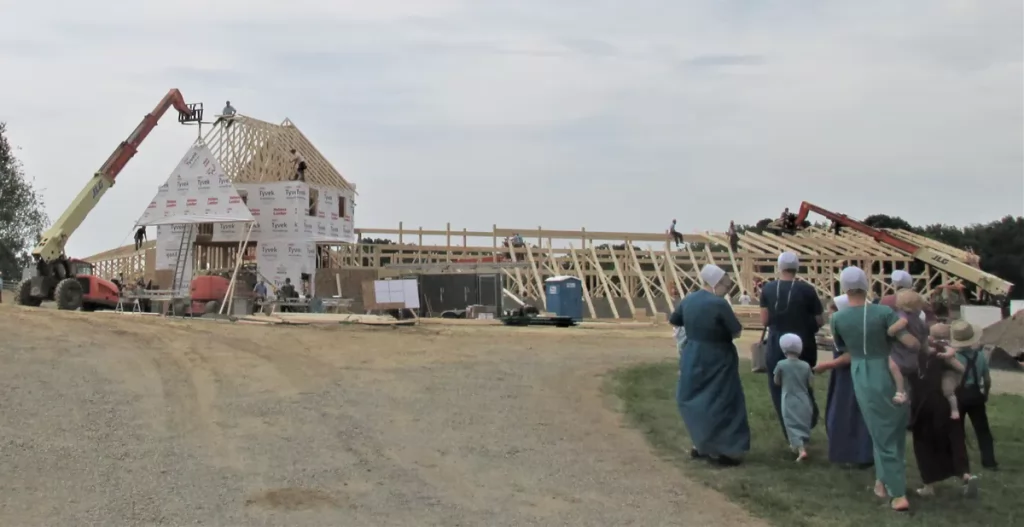
On the barn-raising day, 100 to 150 Amish men arrive early. The organizer or hired engineer oversees the entire project and gives detailed instructions to the men. The Amish women prepare and bring the food for lunch and afternoon break in a potluck and huge all-you-can-eat buffet setting.
The Amish have no diet restrictions, as they believe they need more carbohydrates due to their heavy daily workload. The food served at their barn raisings usually consists of bread loaves, butter, potatoes, beef roasters, chicken, pies, vegetables, etc.
Amish children also participate in the event. Some help with the occasional carrying of light materials needed for the construction, and some help their mothers prepare the meals for everyone. You may also see small children running and playing around.
The Amish barn raising is like a massive event for all Amish; this is why everyone is expected to participate, and even a few outsiders can pay a good visit to watch and learn from the whole building experience.
Most of the time, large communal dinners with ciders are waiting for all participants at the end of the day.
How Long Does An Amish Barn Raising Take?
Contrary to outsiders’ belief that the Amish custom of barn building can be done in one day since almost all able-bodied members of the Amish community are helping, the barn construction and final finishes may take a week or two.
The whole process of building barns is more challenging than we see in pictures or read online – especially for the Amish, who never rely on machines, materials, and methods developed by modern society.
The wood frame, however, takes up a single day to lay. But before that iconic step, the workers must first work on the clearing and foundation a day before. Since hundreds of hands are working, the barn’s entire frame is expected to be put in place by the end of the barn-raising day.
The enclosing – roof, exterior walls, paints, and other finishing steps may take a week or more, depending on the structure’s overall size.
Who Pays for It?
In a regular barn raising, the Amish family who owns the property usually pays for the supplies. They may also hire engineers who foresee the whole plan and process. They are also responsible for ensuring the materials needed are accessible and available.
Suppose a disaster is the cause of the building or repair, and the family can’t afford anything. In that case, the Amish church and its members may donate lumber, materials, and some domesticated farm animals.
Since they never delay extending their hands to the needy, homelessness and starvation don’t exist among Amish families in any of their communities.
The labor cost is always free in an Amish barn raising. The volunteers usually bring their tools.
Amish Barn Raising: The Preparations
Before an actual barn raising, the owner, or organizers will do all the planning and preparations. The Amish will usually collaborate ahead of time to see what resources and materials everyone can contribute. This will also give them enough time to trim all the lumber and clear the ground site according to plan.
The cellar and foundation will be laid first. This is done a day before or on the morning of the barn raising, so the workers can spend the day assembling and putting up the frame. If the structure is huge, the roof, walls, enclosures, and paints will be done in the next few days or even weeks.
Conclusion
Barn raisings are not exclusive to the Amish. There are lots of countries and cultures that used to do this tradition. Due to a lack of resources in the early centuries, people would always automatically gather to help neighbors and those in need.
Others may have a different name or a different setup, but all barn raisings have one goal: to help each other and promote camaraderie. However, many have abandoned this tradition since technology has already provided the “extra hands” the old civilizations lacked.
Since the perks of modern times haven’t touched the entire Amish community yet, the Amish Barn Raising has remained one of their most important events.
Additionally, their Amish belief in aiding others has preserved this tradition for eternity. Despite the heavy work, everyone can expect that the Amish Barn Raising will always be there to stay.
